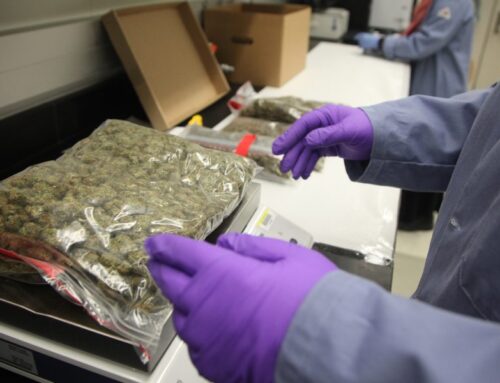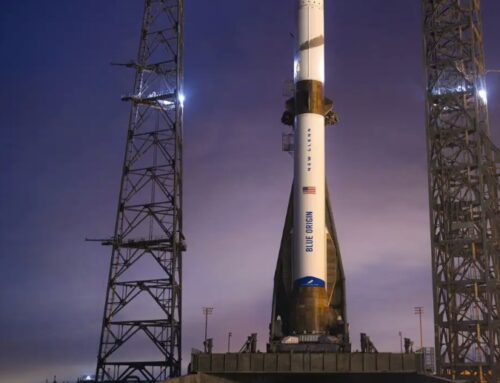There’s lithium in them thar hills – but fears grow over US ‘white gold’ boom
October 21, 2022
The treasured mineral is critical for electric vehicles and could help slow global heating, but locals worry about the harmful extraction near tribal land
Deep in the parched landscapes of Nevada, there is a stirring boom. The mining of lithium holds the promise of a treasured resource that can help slow disastrous global heating.
Spurred by a growing demand for battery parts essential for electric vehicles, the US’s only major lithium mine, in Silver Peak, a remote outpost situated in desert scrub and nascent Joshua trees a three-hour drive north of Las Vegas, is doubling its production.
Across Nevada, there are more than 17,000 prospecting claims for lithium, a soft metal dubbed “white gold” by investors due to its scarcity and increasing value as clean energy components, with several new major projects now planned. Nevada can be to lithium “what Wall Street is to finance, or what Silicon Valley is to technology”, Steve Sisolak, the state’s governor, has envisioned.
This surge is a critical step in tackling the climate crisis according to Joe Biden’s administration, which has used cold war-era emergency powers to force a ramp up in the domestic mining of lithium and other materials needed for electric cars, heat pumps and other clean energy technology.
But the prospect of this new era of mining has unnerved some environmentalists and native American groups. Three-quarters of all known deposits of lithium in America are found near tribal land, igniting fears that a decline in destructive fossil-fuel mining could simply be replaced by a new form of harmful extraction.
Plans for a major, controversial new lithium mine in northern Nevada – a 1,000-acre site called Thacker Pass – will “will turn what is left of my ancestral homelands into a sacrifice zone for electric car batteries”, Shelley Harjo, a member of the Fort McDermitt Paiute and Shoshone Tribe, has warned, all still without meeting the burgeoning thirst for lithium.
Silver Peak has operated as a lithium mine since 1966, its sprawling 21 sq mile site situated in the Clayton valley, an arid area comprised of former lake beds and fringed by mountains. A single, bumpy road leads in and out of a place so remote that any aliens in the nearby Area 51 would significantly add to the region’s sparse population.
The mine draws its lithium via a network of 22 enormous ponds that hold briny liquid that has been pumped in from underground. The brine evaporates out vast expanses of salt as it bakes under the piercing Nevada sunshine, eventually separating the lithium within.The salt accretes to 10ft deep in places as the brine is cycled around through the ponds, becoming denser the further it goes.
It can take up to two years for the brine to be “heavy” enough for processing, at which point it is a brilliant azure, as if an idyllic Caribbean beach scene has been transplanted to the Nevada desert. The brine is taken to an on-site plant, where lime and soda ash is added to further the transformation; it is then filtered, pressed and dried into lithium carbonate, a powdery substance that looks a little like flour, or cocaine.
Silver Peak produces 30 large sacks of this lithium, each weighing a ton, to be sent directly to EV makers such as Tesla or for further processing for ceramics or cellphone batteries. Around 5,000 tons are produced a year and Albemarle, operator of the site, aims to double this to 10,000 tons within a few years to help quench the increasingly voracious appetite for a substance not found in pure form on Earth but prized for its light weight and ability to help batteries charge faster, last longer and have more power density than ever before.
“Demand for lithium is tremendous; right now, I think it’s safe to say that certainly demand exceeds supply,” said Karen Narwold, executive vice-president at Albemarle.
The 5,000 tons of lithium coming from Silver Peak is enough to make batteries for 80,000 electric cars. Even doubling this output will make a relatively small dent in the amount of lithium required – half of all cars sold in the US will be electric by 2030, according to some forecasts, with about 26m EVs on the road by this time.
“Our customers are demanding this,” Narwold said. “I think the infrastructure bill as well as the inflation reduction act are really tremendous opportunities for the US to develop a domestic supply chain for EVs.”
The legislation passed by Democrats aims to wrest the production of clean energy parts back from China, handing out more than $370bn in tax credits for renewable projects such as solar and wind, as well as incentives for domestic battery manufacturing and electric vehicle construction.
“We need to end our long-term reliance on China and other countries for inputs that will power the future,’’ Biden said in April as he announced a measure under the Defense Production Act, usually used in wartime, to mandate an increased American production of lithium, cobalt, nickel and other materials used in clean energy technology. “I will use every tool I have to make that happen,” the president vowed.

The push for cleaner energy is causing demand for lithium to spiral – the International Energy Agency has projected that global demand will grow by over 40 times by 2040 if countries stick to their Paris agreement targets to reduce planet-heating emissions – and will likely spark several new mining operations across the US.
America is starting from a low base, however. The country produces just 1% of the world’s lithium, almost all of it coming from Silver Peak. Albemarle’s expansion of production here, along with a restarting of mining at a site in North Carolina that once produced lithium for the Manhattan project, will barely shift this equation.
The bulk of production happens in Australia and Chile, both countries where Albemarle has mines, and involves both brine extraction and rock extraction, where an ore called spodumene, that contains high levels of lithium, is dug up in open pits. Some farmers in Australia have complained of possible pollution of waterways from the runoff from this sort of mining.
If demand for electric cars takes off as expected – California and New York, for example, have both mandated no new diesel or gasoline cars can be sold after 2035 – then the likes of Ford, Tesla and General Motors will need around 900,000 tons of lithium from the US and Canada to if production is to be fulfilled domestically, according to Rystad Energy. Production in north America is only likely to reach 600,000 tons by 2030, the research firm estimates.
“There is already a deficit of lithium and we don’t see any surplus situation coming from local operations,” said James Ley, an expert in the global energy metals market at Rystad. “The investment is going to increase and lots of new mining projects will kick off, but it’s not coming quickly. It can take years for a new mine to come to fruition.”
The industry also faces scrutiny of its environmental impact, such as potential harm to local biodiversity and its use of water in places, such as Nevada, that are facing increasingly severe droughts as the world heats up.
In northern Nevada, a place called Peehee Mu’huh – or Thacker Pass – is sacred indigenous land and also potentially the largest deposit of lithium in the US. A company called Lithium Americas aims to mine this lithium, despite the fact that tribal members say that a massacre of at least 31 members of the Paiute tribe took place here in 1865. The project is “like putting a lithium mine on Arlington cemetery”, according to Daranda Hinkey, organizer with People of Red Mountain, which opposes the new mine and is involved in a court battle to halt it.
“The clean energy transition cannot be built on dirty mining,” said Lauren Pagel, policy director of Earthworks, an environmental group. Pagel said that more resources should be put into recycling lithium rather than adding to “the generational trauma experienced by mining-affected communities, particularly indigenous communities”.
Narwold stressed that Albemarle will fully involve local people in its own environmentally sensitive expansion plan, but conceded that some companies in the industry are “further along the curve of acknowledging their responsibility” than others.
“If you think about traditional hard rock there’s a lot of bad examples in history of what people have done,” she said. “I can only speak for Albemarle, but it is very top of mind for us for us. We look very seriously at all aspects of that environmental stewardship and community engagement. We’re kind of at the infancy of the lithium revolution but we all know what’s expected of us from a sustainability standpoint.”
There can be no more hiding, and no more denying. Global heating is supercharging extreme weather at an astonishing speed. Guardian analysis recently revealed how human-caused climate breakdown is accelerating the toll of extreme weather across the planet. People across the world are losing their lives and livelihoods due to more deadly and more frequent heatwaves, floods, wildfires and droughts triggered by the climate crisis.
At the Guardian, we will not stop giving this life-altering issue the urgency and attention it demands. We have a huge global team of climate writers around the world and have recently appointed an extreme weather correspondent.
Our editorial independence means we are free to write and publish journalism which prioritises the crisis. We can highlight the climate policy successes and failings of those who lead us in these challenging times. We have no shareholders and no billionaire owner, just the determination and passion to deliver high-impact global reporting, free from commercial or political influence.
And we provide all this for free, for everyone to read. We do this because we believe in information equality. Greater numbers of people can keep track of the global events shaping our world, understand their impact on people and communities, and become inspired to take meaningful action. Millions can benefit from open access to quality, truthful news, regardless of their ability to pay for it.
Every contribution, however big or small, powers our journalism and sustains our future. Support the Guardian from as little as $1 – it only takes a minute. If you can, please consider supporting us with a regular amount each month. Thank you.
Search
RECENT PRESS RELEASES
Related Post




